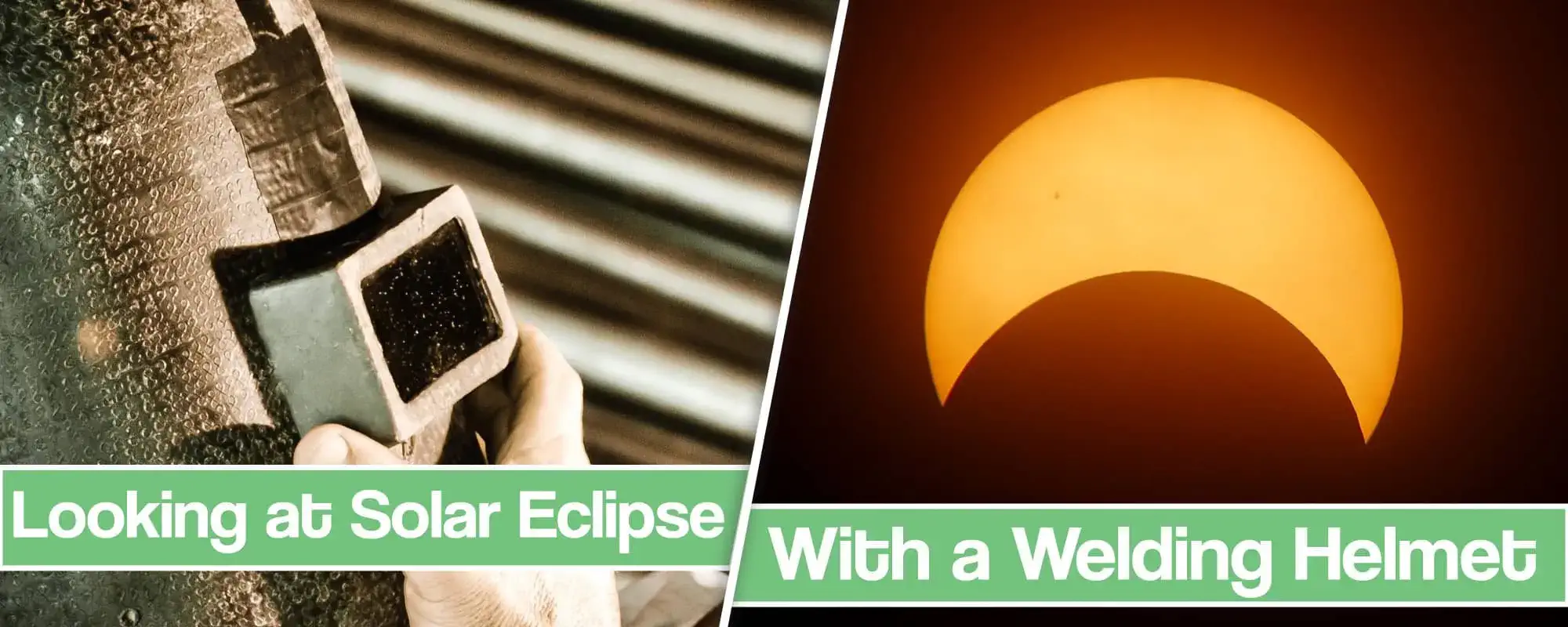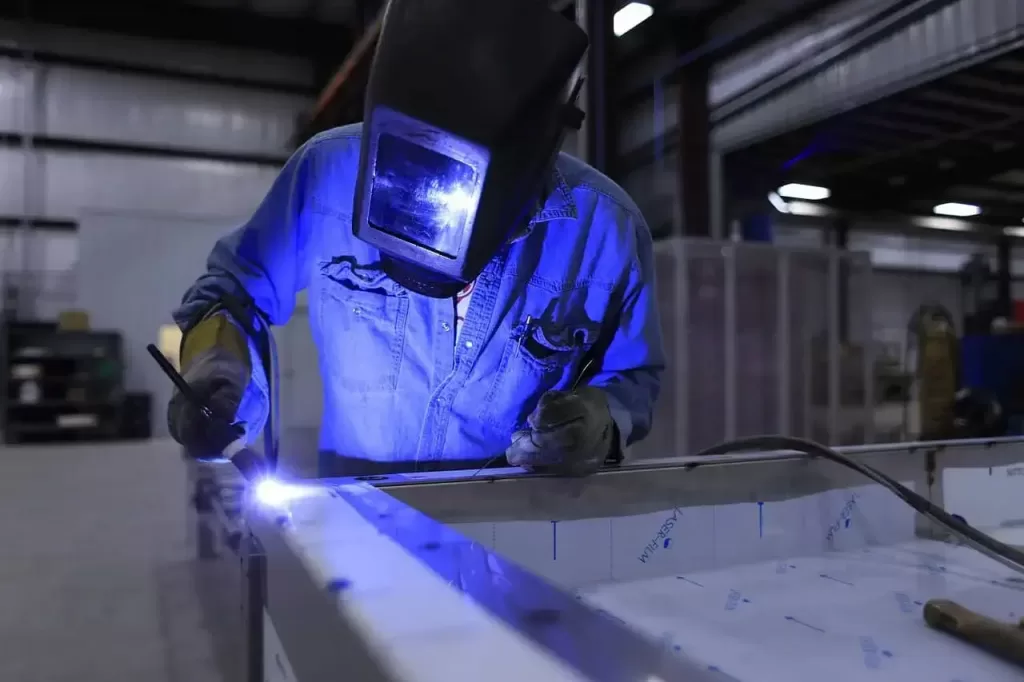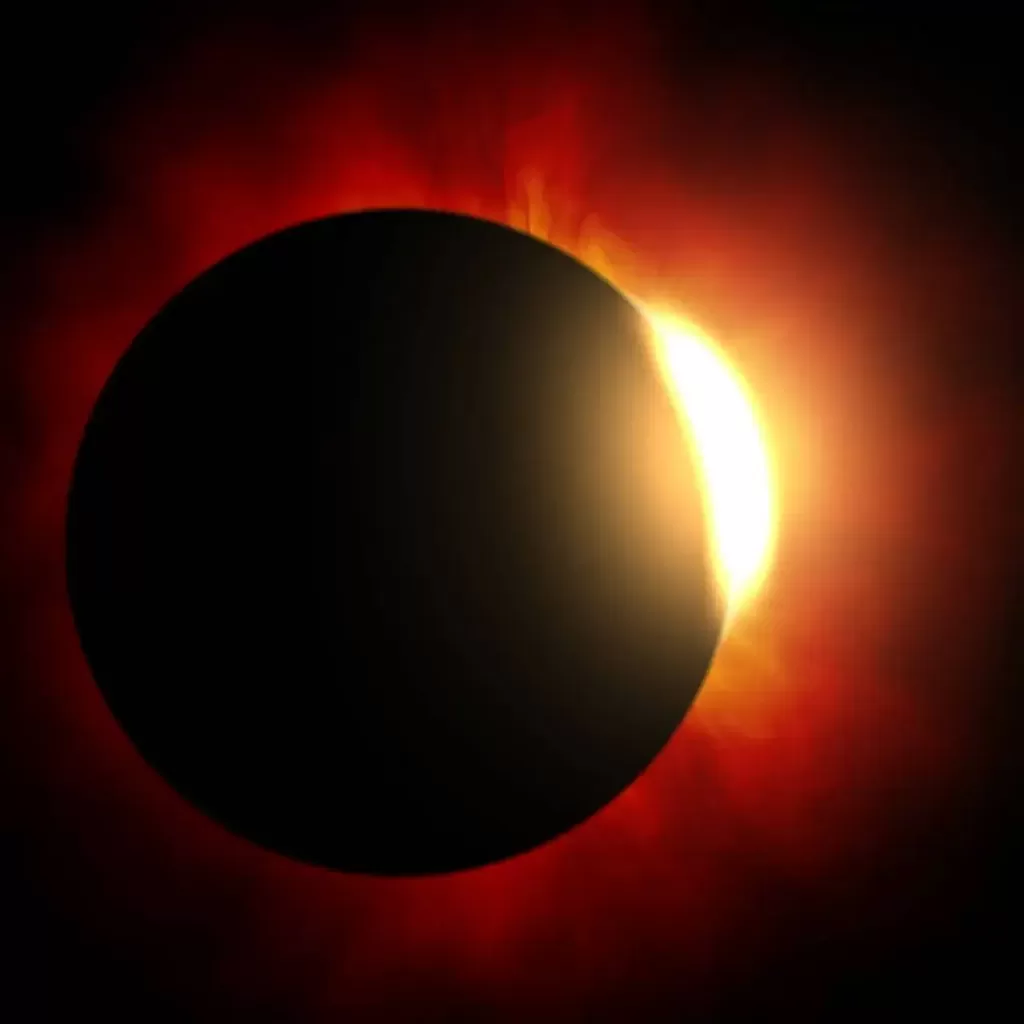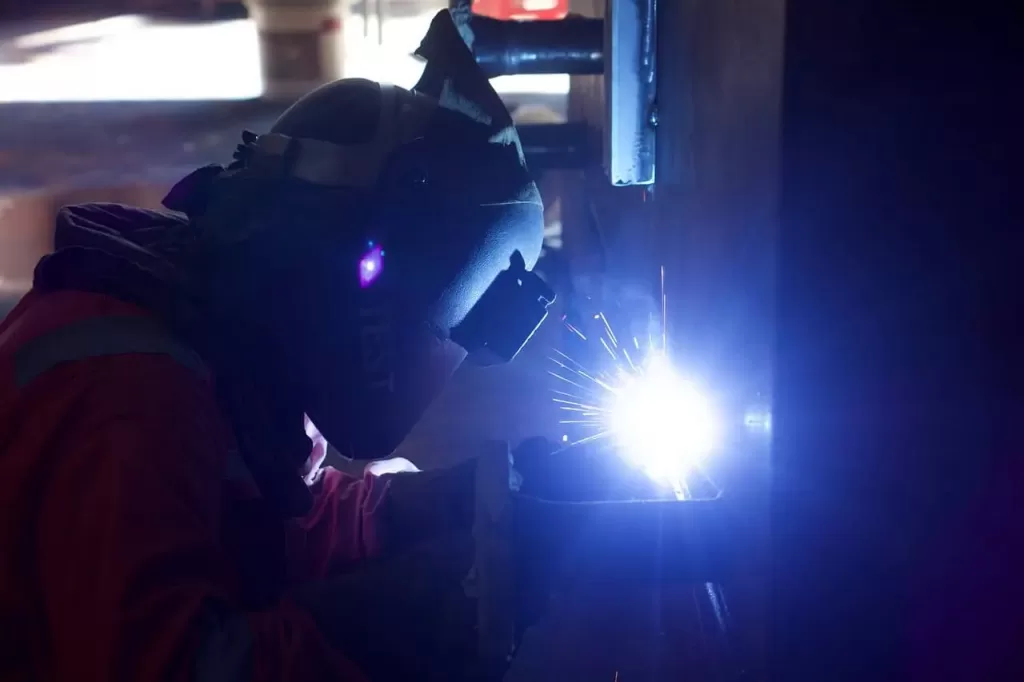
Yes, you can. But only with the shade level of 12 and higher according to NASA. Looking at a solar eclipse without adequate protection can lead to blindness or serious eye injuries. It’s not the visible light that gets you but the invisible UV radiation.
This means that even if the eclipse caused the visible light to be bearable to look directly at the sun, the invisible UV radiation is just as dangerous as always! That’s exactly the problem. You could be looking at the sun thinking “Hey, it all feels good, the light is quite dim so I am good.”
You would be wrong. Especially because the symptoms are likely to develop later. Now let’s see how can a welding helmet actually protect your eyes from the solar eclipse.
How Do Welding Masks Protect Your Eyes?
The welding helmet uses a specialized lens to filter out dangerous UV and IR radiation originating from the welding arc. These lenses are composed of several layers that block individual UV light types.
Welding helmets can auto darken once exposed to dangerous light or they can have a fixed shade aka passive welding helmets.
Looking at a solar eclipse with a welding helmet is safe as long as you use a welding helmet that has a shade level of 12 at a minimum.

Anything below that is not good enough and your eyes may get damaged. You can learn more about how welding helmets work in our separate article.
Why is a solar eclipse so bad for your vision?
On any normal day, you wouldn’t even attempt to stare at the sun. That’s because the visible portion of UV radiation would be too hard to handle and your eyes would hurt. Staring at the sun for a prolonged period will lead to pain, eye injury or even blindness..
But during a solar eclipse, the visible light becomes easier on the eyes and you wouldn’t necessarily feel the pain or any issues when the moon covers a large portion of the sun.That’s the problematic part. That’s where you can ruin your eyesight.
When you watch the eclipse without the protective eclipse glasses or without using a welding helmet to view it, the invisible portion of the UV light damages the photoreceptors, causes blind spots, increases sensitivity to the light and can lead to blindness.

You will start to experience symptoms later on. This depends from person to person but usually, the symptoms will begin somewhere around 12-24h after you watched the solar eclipse without eye protection.
What happens when UV radiation hits the eyes
When your eyes are exposed directly to the UV radion they will literally start burning but on a micro-level. Your eye will experience something similar to sunburn in mild cases and in more severe cases it will get a permanent injury or blindness. This condition is called photokeratitis.
This can happen when you stare at the sun, watch a solar eclipse, if you are welding without the auto darkening or passive welding helmet or if your eyes receive excessive UV reflection from the snow, water and similar surfaces.
To view the eclipse you must use at least shade 12 protection or risk getting eye damage or in worse case scenario you could go blind. While shade 12 is approved by NASA, some people still benefit from going with shade 13 and even shade 14 when they choose their safety welding helmet to observe a solar eclipse.
That’s because their viewing experience may be different than yours. Many people have more sensitivity to the solar eclipse event and they need the safety equipment that filters out more of the bright visible portion of the UV rays. You can’t get any permanent eye damage if you use shade 12 according to NASA but some people enjoy a better view if they darken even further when viewing the eclipse.
Is it ever safe to look at the solar eclipse without a welding helmet?

Yes. But it is recommended to always use a welding helmet with shade 12 or higher or a pair of adequate solar eclipse glasses.
In theory, you could look at the solar eclipse when it is in the total state. When the moon completely covers the bright sun. Total solar eclipses are very rare and this can be observed only from a narrow path of the solar eclipse path. Chances are that you are not looking at a total solar eclipse so you are better safe than sorry.
How to choose a good welding helmet for the solar eclipse?
First of all, it has to be shade 12 or higher in order for the welding helmet to substitute the eclipse glasses. Almost every welding helmet out there will suffice.
If you have a welding helmet that has a lower DIN value then you shouldn’t use it to stare at the sun. It’s just dangerous. However, such helmets are rare, especially if it auto darkens.
Welding masks come in many variants and if you are planning to get one only to look at a solar eclipse then you should find a welding mask that is affordable with a shade 12.

Professional welding helmets are very expensive and unless you do welding for living, you are not going to need a $500 welding mask. Watching an eclipse with a welding helmet requires a cheap DIY hobbyist level welding mask as long as it has the proper shading level.
In our article about the best welding helmets, we reviewed many budget options so you should start there. Additionally, if you will never use that welding helmet again, consider getting a passive welding helmet with a minimum of DIN 12 rating. If you wear a passive welding mask, you will achieve the same result as the auto darkening mask while saving some money.
Conclusion
You must use either eclipse glasses or a welding helmet to view a solar eclipse. If you don’t the invisible portion of UV radiation will damage your eyesight. It will be just as if you were staring at the sun on a regular day.
While the total solar eclipse is an exception, don’t count on it. You only have one pair of eyes so view the eclipse responsibly.
Resources
- Solar Eclipse Safety: What Shade Should Your Welding Mask Be? at www.phillips-safety.com
- How to View the Solar Eclipse Safely at NASA.gov
- What is Photokeratitis at American Academy of Ophthalmology




